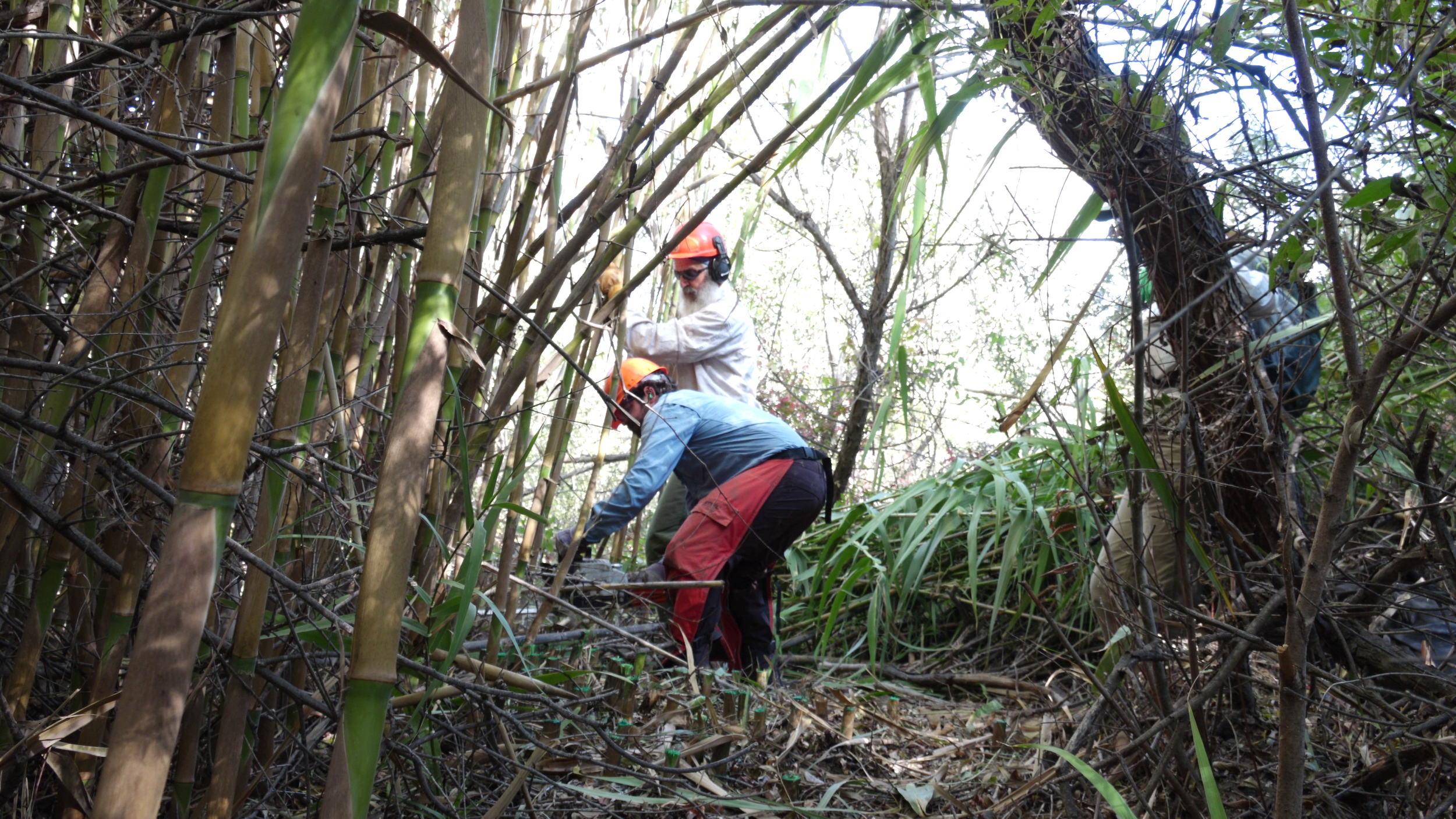Here at Channel Islands Restoration we work in a lot of scenic places - the cliffs of East Anacapa Island, the peaks of Santa Rosa Island, on the sand dunes of San Nicolas Island, along the banks of the Sisquoc River, in the rolling grasslands of the San Marcos Foothills, and more. However, sometimes it’s not so glamorous, and that’s been the experience for many of our field technicians in the past few months.
Field technicians work to cut down arundo.
The Santa Clara River is 83 miles long and flows from the small city of Acton, down through Santa Clarita, and to the Pacific Ocean at McGrath State Beach. Castaic Lake, Lake Piru, and the Sespe Creek all flow into this river. It provides vital habitat for species of concern such as southwestern pond turtles, least Bell’s vireo, and steelhead trout (it actually hosted the largest run of steelhead trout in Southern California in the early 1900’s), it also used to provide habitat for beavers until European settlers arrived. Unfortunately, the river is infested with arundo (Arundo donax), which is sucking the river dry and directly causing the population decline of species that rely on it.
Channel Islands Restoration has been working alongside multiple other agencies to eradicate arundo from the Santa Clara River for years, and we recently took on a new project in a 33-acre riverside parcel. When we began, we had no idea where any of the arundo was - just that it on average covered an estimated 5% to 25% of the parcel - so it was up to us to find it. Keep in mind that the parcel is 33 acres large (roughly the size of 25 football fields) and filled with vegetation so dense that you could hardly see someone standing just five feet away from you. To top it all off, poison oak was just about everywhere.
For the sake of efficiency we split up into two teams - one that surveyed the entire area, and another that carried the chainsaws and equipment necessary to remove the arundo. The former team would use a GPS to mark any arundo location they found, and then the chainsaw crew would go from point to point to treat each stand. The GPS units served another purpose in helping people not get lost, because as soon as you stepped off a trail, you could hardly see the sky - let alone orient yourself with any large landmarks.
After a few months’ work, we found more than 700 stands of arundo and treated almost 500 of them - for a total of 1.5 acres treated (imagine a full football field densely packed with towering stalks of arundo. CIR is scheduled to work to remove arundo from the Santa Clara River for years to come.


